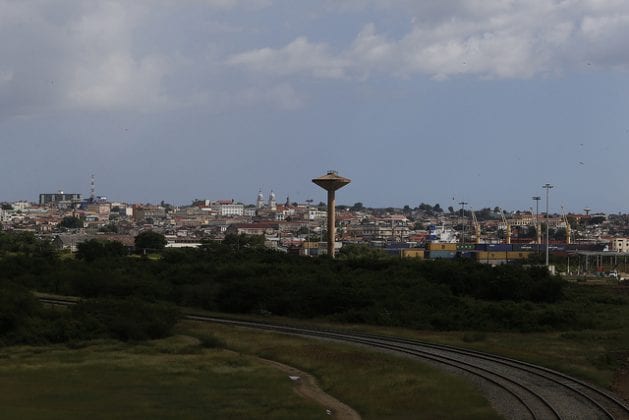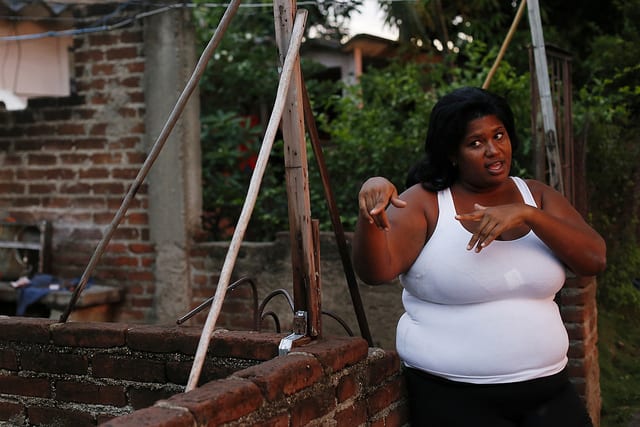Rundown Public Services Affect City Outskirts in Cuba
By Ivett Gonzalez (IPS-Cuba)

HAVANA TIMES – When big, dark clouds fill the sky or there’s news of a hurricane on the weather forecast, sports trainer Yanilia Castre gets ready for flooding in her neighborhood, Nuevo Vista Alegre, on the outskirts of Santiago de Cuba, the second largest on the island.
“This all becomes one big lagoon… Every street floods whenever it rains,” this Physical Education graduate tells IPS, despair in her voice. She has lived in this neighborhood her entire life, on the fringes of the city of Santiago de Cuba, 847 kms to the east of Havana, with a population of 433,498 inhabitants.
When it rains, water covers the damaged streets and enters homes in this low-lying area because of the city’s old drainage system, the foundation of which is over 500 years old. “We have gone to the government, people have come, investments have been made, but there haven’t been any results. I don’t believe this will ever get fixed,” Castre laments.
Storms disrupt life in this legally built neighborhood and other communities on the outskirts of Santiago because of shortcomings in drainage systems.
“When hurricanes come, you have to elevate fridges, put beds on top of blocks. And even doing this, some people’s appliances still suffer damages. Sewage water mixes with other water,” the trainer told us, who works at a sports school.
Old and limited drinking water supply networks and sewage systems affect the quality of life of residents living on the outskirts of Cuba’s large cities, such as Santiago. However, these problems are often overshadowed by the national housing crisis in a country with 11.2 million inhabitants.
With the historic center being completely renovated in 2015 because of the city’s 500th anniversary, as well as other urban projects, Santiago continues with the burden of extending and modernizing its sewerage system, works that are too costly for the government’s coffers.

“The sewerage system is out-of-date, it doesn’t have the capacity needed,” explained Omar Lopez, the director of Santiago de Cuba’s Curator’s Office. “It’s a matter of making the most of the existing network, but it’s very old and overloaded,” he said about the city’s most pressing issue after the housing deficit and homes in poor condition.
This is why “the city floods more”, the architect explained to IPS, who pointed out that the “suburbs” are most affected by this. “The city was growing and unplanned neighborhoods on the city’s outskirts didn’t have sewage systems, they have septic tanks, or if there’s a small river then they all throw it out into this basin,” he explained.
The solution lies in building new sewage systems and increasing the number of treatment plants, as today, the plant is working at a low level to sanitize waste water that is deposited in the sea of this city which was founded around the bay of the same name, which is the most important in Cuba’s Oriente region.
“This project would cost millions, just like the new aqueduct did. A lot of hard work, which implies digging up roads, bringing equipment, mobilizing people and connecting everything,” the expert pointed out. “It is a very complicated task, even more so in a city the size of Santiago,” the city’s curator stressed.
Unregulated urban growth, as well as poor management by local governments and the wear and tear of infrastructure (in a country that has been suffering a crisis since 1991, which has got worse ever since 2016), adds another challenge to the sustainability of urban settlements, that are the home to 76.8% of the Cuban population.
Internal migration, from rural areas to the cities and from the East to the Center and West, also shapes the outskirts, especially around large cities. In the city of Santiago de Cuba alone, 42 precarious settlements (which sprouted up within the city or on its outskirts) were registered in 2013.

Places like Nuevo Vista Alegre, where structured neighborhoods stand next to spontaneous ones, legal neighborhoods with illegal ones, and precarious housing with luxury housing, make access to basic services even harder, which the State subsidizes for every person in this Caribbean country with a Socialist government.
Waiting for funds, the authorities’ strategy to alleviate this problem has been to locate new buildings where they can make the most of the existing network, in a city which builds 2000 residential units every year, but needs at least double this, so they can relocate some settlements.
Near Nuevo Vista Alegre, the San Pedrito neighborhood has completely changed. “This decision has provided relief to these people who suffered flooding,” Castre weighs in. “Maybe the solution is to fix one drain because it isn’t the entire neighborhood that is affected, just here, because it’s low-lying,” she assessed.
“The Cuban people have displayed a clear tendency to concentrate in urban areas, and especially in a few cities,” concluded the “Concentrated Human Settlements of 1000+ inhabitants Census’ from 1907-2012” report, which were published in September 2018 by the National Office of Statistics and Information.
Peripheral neighborhoods of other cities suffer other disadvantages that aren’t very well known, such as in Palma Soriano, which is one of the five cities with over 20,000 inhabitants in the Santiago de Cuba province, bordering the provincial capital.
This municipal government’s president in this small town, Juan Leonardo Huepp, told IPS that the city’s main problems are with the water supply and the road system.
“Seven days is the shortest period of time we have to wait for water, and the longest period is up to 28 days long, in some places. Everyone has to store water,” he explained in regard to water supply both by pipes from the system, as well as the alternative of water tankers.

With a large population and a demanding agro-industry, Palma Soriano’s local government is facing the tough task of ensuring the water supply amidst the collapse of its extremely old aqueduct, built in 1926, and the worn away water pipes while a new system is built.
This essential liquid reaches neighborhoods by traveling in water tankers, while it’s transported by train to the sugar industry.
“The cost of the service is at least twice as high,” Huepp said, to supply almost 15% of the population of 78,000 inhabitants in Santiago de Cuba, the capital of the province of the same name.
Right on the city’s fringes, the precarious and budding neighborhood of El Congris receives water in tankers once a month.
“It’s very hard, although we are making up for (shortcomings in supply) with tractors with tanker trailers from companies that support critical cases of bedridden people and with other needs,” councilwoman Magalis Benitez explained to IPS.
Even farmers with wells on their land have received a special license from the local government to distribute water to homes, offering a private service that only charges for the transport. Between 2016 and 2017, the neighborhood was among the beneficiaries of a project about safe water coordinated by international organization Oxfam.
In his front door, Benitez is responsibe for distributing an established amount of drinking water that one of the 10,000 liter community tanks stores, which was contributed by the project, benefitting 4,234 families in the municipality of Palma Soriano.
“We receive seminars and workshops about the uses of water… people were prepped for this situation,” he pointed out.
